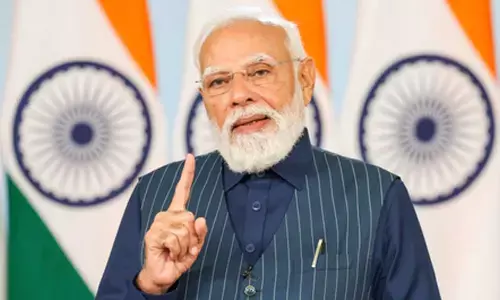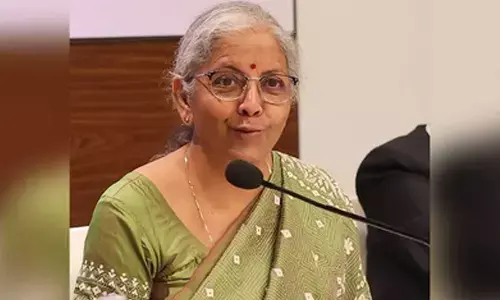Benefit farmers, not super-rich

Benefit farmers, not super-rich
It comes as a shocker. India is competing with Russia when it comes to how fast billionaires have added onto their wealt
It comes as a shocker. India is competing with Russia when it comes to how fast billionaires have added onto their wealth. In fact, both the countries have almost double the amount of wealth, measured as percentage of GDP, concentrated in the pockets of the superrich when compared to the rest of the growing economies.
We have always heard of oligarchy in Russia. These extremely wealthy obviously are politically connected. Encyclopaedia Britannica had classified them as tycoons, who reaped enormous fortunes after the collapse of the Soviet Union in 1991. Although the US, European Union and Britain had applied sanctions, the Forbes magazine had still kept a tab on their fortunes to know how their fortunes continue to swing.
In a 2022 report, Forbes published a list of Russian oligarchs. Of the 83 on the who’s who list of 83 superrich in Russia, 68 were considered to be oligarchs. Now, technically speaking, India has no oligarchs although it has large business houses that are politically well-connected, the stupendous rise in the wealth of these superrich to match the fortunes of the Richie rich in Russia certainly is appalling. We need to ascertain how the Indian billionaires could catch up with the Russian counterparts.
According to a well-researched analysis by Ruchir Sharma, chief of Rockefeller International, and published in Financial Times (June 18, 2023): “Russia has long been with the highest share of ‘bad billionaire’ wealth and still is, at 62 per cent. India, however, ranks worst among emerging top 10 markets for inherited share of billionaire wealth, at 60 per cent.”
Reading the FT analysis, a lot of things became clear. When it comes to ‘bad billionaire’ what the author implies is the share coming from rent-seeking industries like real estate. Interestingly, Switzerland tops the list of the growing economies with billionaires’ wealth growing by over 25 per cent (of its share of GDP); Sweden by 24 per cent; France by 21 per cent and the US by about 18 per cent. As against all these countries, the wealth of Indian billionaire increases by a whopping 60 per cent as percentage of the GDP. Whoa!
Considering that an Oxfam International report had earlier computed the number of billionaire to have increased from 102 in 2020 to 166 in 2022 and that too at a time when the poor “are unable to even afford basic necessities to survive,” wealth inequality in India is certainly obscene by any standards.
When some economists and business heads in India say that the economic juggernaut is unstoppable, I only hope they realise what they are saying. This is not the kind of economic growth that India envisions. Instead of supporting this notoriety where only a handful of the superrich continue to amass wealth, India needs to put its resources in building small and medium enterprises and to resurrect agriculture to convert it into the future powerhouse of economic growth.
Anyway, returning back to Financial Times analysis, in an earlier interesting paper titled: “The sky and the stratosphere: wealth concentration in India during the last (lost) decade,” authors Ishan Anand of IIT Delhi and Rishab Kumar of the University of Massachusetts had explained how the top one per cent share in wealth in India was second only to Russia.
Given that India is home to the largest number of people living in extreme poverty (an estimated 228 million in 2019-21 as per the UNDP), the wealth concentration in the hands of the top one per cent in India had even surpassed that of China, the US and other Asian tigers.
The rich becoming stingingly rich is a phenomenon that has been talked about for quite some time now. More recently, talking of the ‘era of concentration’, the Washington Post reported a few days back (June 21) on how “just six conglomerates now control or have major stakes in 25 per cent of India’s port capacity, 45 per cent of cement production, a third of steel making, nearly 60 per cent of all telecom subscriptions, and more than 45 per cent of coal imports.”
A lot of heat and dust has been raised in the recent past on how the government has been bending backwards to favour a handful of industrialists.
If you look at it globally, the same kind of power and control is getting concentrated in the hands of a few conglomerates or in the hands of a few rich families. Whether it is in the US or European countries, concentration of power is clearly evident. In the UK for instance, a University of Greenwich policy brief tells us that the richest 50 families have more wealth than the bottom half. If it continues to grow in the same proportion, the wealth of the richest 200 families will be more than the entire UK economy by 2035!
While we can blame the Russian oligarchs, the fact remains that even in the US, the rich corporate are officially backed, giving them lavish tax cuts and stimulus package. This in my understanding is the kind of largesse that leads to further worsening inequality.
Surprisingly, the banking system’s policy of write-offs of massive bad debts for the corporate and stinging rules to haul up poor defaulters too exacerbates inequality.
To narrow the wealth gap, China is the only country that has launched a programme. In 2021, addressing party workers, President Xi Jinping had said: “We absolutely cannot allow rich-poor gap to increase bigger and bigger, the poor poorer and the rich richer. Absolutely not allow an insurmountable gap between the rich and the poor.”
Keeping his promise, he has already pressed the button. Calling for moderate wealth, he has launched a programme to usher in “common prosperity.” When the FT analysis cites the example of countries like Poland, Taiwan and South Korea where the share of billionaire is less than three per cent of the GDP, it actually implies the need to move towards an egalitarian economy.
I have always been of the opinion that in a large agrarian economy like India, the best way to reduce wealth inequality is to focus attention on revitalising agriculture.
Although many will question the need to withdraw undue support to the industry saying it would hit employment generation, the fact remains that agriculture is the largest employer. This is the only sector that can truly revitalise the economy and meet the growing challenges of unemployment.
Instead of killing agriculture, the effort should be on rebuilding farming enterprises.














